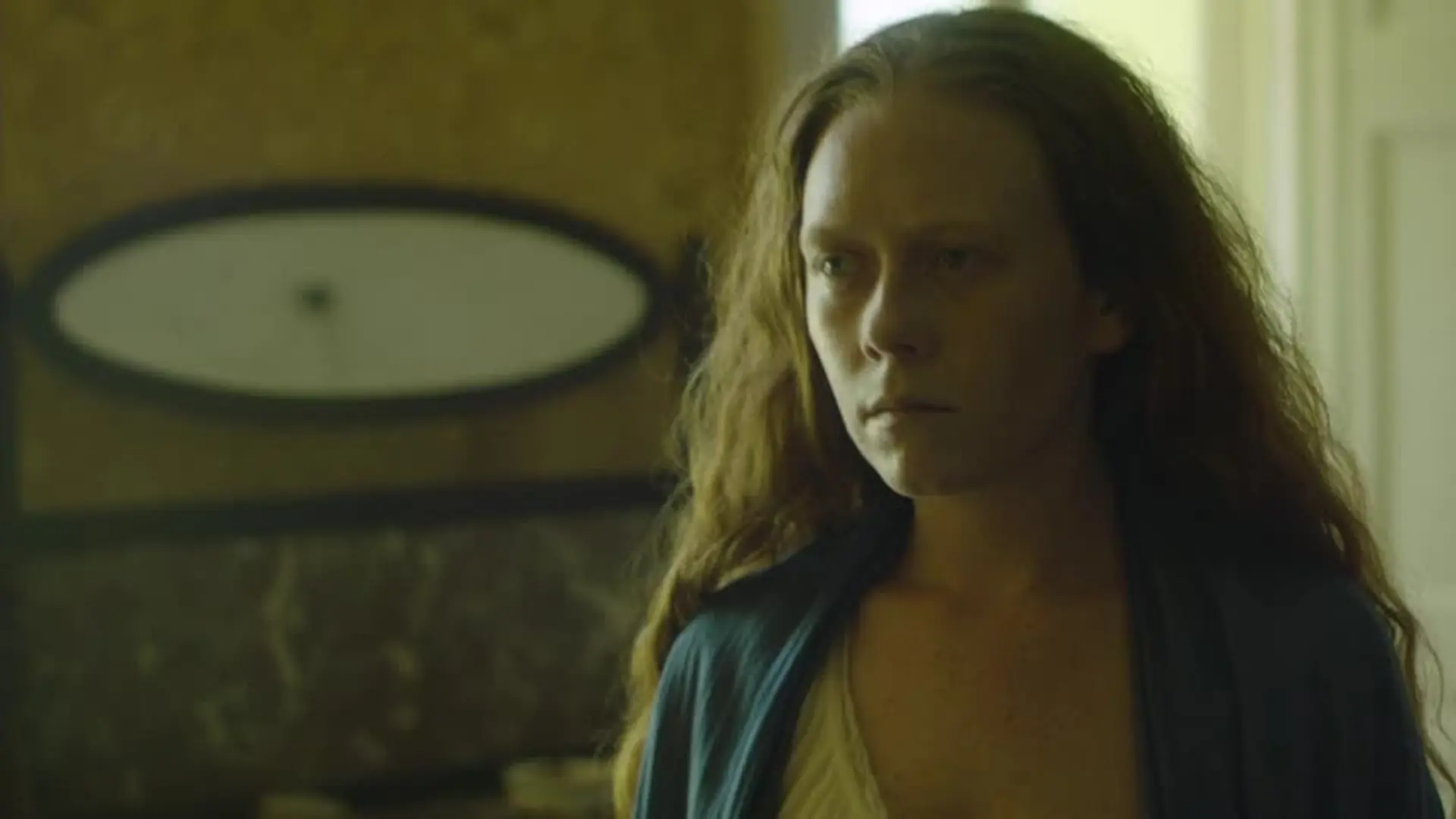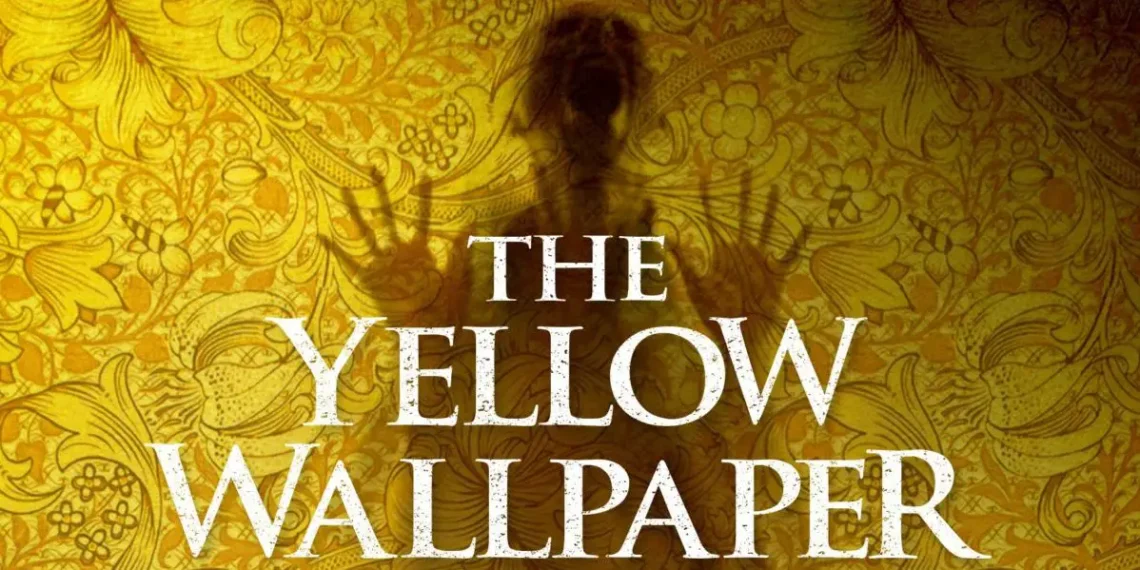Depression is an emotion with no concrete definition, and this complexity is thoroughly explored in The Yellow Wallpaper. The film, an adaptation of Charlotte Perkins’ 1982 short story, delves into the depths of postpartum depression and the oppressive forces of patriarchy that define the character’s experiences. The slow pace of the movie may be a point of contention, but it also acts as a reflection of the overwhelming struggle Jane faces throughout the narrative. The film’s slower moments reflect the weight of its subject matter, making the narrative feel longer than its actual run-time.
The Yellow Wallpaper Ending Explained: A Struggle Against Isolation
The plot revolves around Jane (played by Alexandra Loreth), who is taken to a remote countryside mansion by her husband, John (Joe Mullins), a doctor. After the birth of their child, John believes that this change of environment will help Jane recover from her postpartum depression. However, his approach seems more about control and oppression rather than healing. Jane is confined to a bedroom that was once a nursery, and her husband insists that complete bed rest is the best way for her to recover.

John’s idea of care includes forbidding Jane from engaging in activities that once brought her comfort, including writing, which he claims would exacerbate her condition. He focuses on her ability to mother rather than her intellectual and personal pursuits, dismissing her own desires and creativity. Jane, unable to express herself, begins to secretly write and look into her imagination, which soon becomes consumed by the room’s yellow wallpaper. The wallpaper begins to haunt Jane, with her imagination twisting its patterns into a vision of a woman trapped behind it. This perceived woman in the wallpaper mirrors Jane’s own growing feelings of entrapment and isolation.
The Love That Suffocates: Patriarchal Control and Overbearing Care
Set in an era where patriarchy dominated society, The Yellow Wallpaper portrays depression as the central theme, but it also critiques the oppressive forces of patriarchal norms. John, in his role as Jane’s husband and doctor, tries to pass off his controlling behavior as loving care. However, his actions reveal a deeper, more suffocating form of “love,” one that stifles Jane’s growth and freedom. Jane’s inner turmoil intensifies as John’s affection feels more like a cage, limiting her autonomy and identity.
In a dream sequence, Jane envisions John suffocating her, pushing her into the ground until she drowns. This dream reveals the suffocating nature of John’s love, which seeks to suppress Jane’s voice and desires. As Jane becomes more isolated in the room, the idea of being trapped is made more apparent in the way she perceives the wallpaper. Her paranoia builds, and she begins to mock John, especially when she locks herself in the room, defying his authority. Her rebellion is a small yet significant act of reclaiming power over her life.
Symbolism in ‘The Yellow Wallpaper’
The yellow wallpaper itself becomes a symbol of Jane’s mental and physical imprisonment. Though the design suggests a natural wilderness, it is, in fact, an artificial creation—much like Jane’s situation. The wallpaper’s vines become a representation of the cage that Jane finds herself in. She desperately tries to tear it off the wall, symbolizing her efforts to escape her mental and physical confinements. Similarly, the metal gate outside, which she is unable to open, mirrors her sense of entrapment. Both the wallpaper and the gate embody the false façade of freedom, with Jane longing to escape her confined existence.
This sense of entrapment is further emphasized when Jane’s postpartum depression leads her to direct her anger toward her baby. Her mental state deteriorates, and she begins to act out violently. In one scene, she throws her baby out of a carriage and later tries to bury him in the garden. Another disturbing moment shows Jane killing imaginary babies with her feet, a horrifying expression of the rage and confusion she feels towards her motherhood, which she believes has robbed her of her creativity and freedom.

The Ending of ‘The Yellow Wallpaper’: Is Jane Dead or Alive?
The ending of The Yellow Wallpaper holds a chilling significance, with Jane’s fate left uncertain yet symbolically clear. It can be said that Jane is, in a sense, dead—however, in her death, she finds a form of freedom she had long been denied in life. In the final moments of the film, Jane acknowledges the woman trapped behind the wallpaper, a reflection of her own entrapment. As she watches the woman creep in daylight, Jane recognizes that the figure is herself, a manifestation of her inner turmoil. This realization marks her mental break and the point where she finds a way to vent her emotional distress.
Despite this realization, Jane’s internal struggle is far from over. She attempts to remove the wallpaper, which has become entwined with the vines outside, a symbolic act of reclaiming control over her environment. However, it is too late. In her final act, Jane hangs herself, in a desperate attempt to escape the cage that has held her for so long. As John attempts to open the locked door and enters the room, we see the metal gate that Jane could not open earlier now unlocked, symbolizing Jane’s final escape.
Yet, the ending is ambiguous. Jane’s body is shown hanging from the ceiling, but in the background, a figure creeps along the wall, mirroring Jane’s earlier actions. This suggests that, even in death, Jane may not have truly escaped her torment. The final image of her “creeping” behind her own lifeless form implies that she is still trapped, even in her death. Her soul might be freed from her physical cage, but her mental and emotional torment may continue. The film leaves us with this unsettling image of Jane, forever creeping, searching for freedom that remains elusive.

A Psychological Horror About Freedom and Oppression
The Yellow Wallpaper is a psychological horror film that uses the story of Jane’s descent into madness to explore broader themes of depression, isolation, and the oppression of women. Directed by Kevin Pontuti, the film presents a chilling portrayal of a woman struggling to maintain her sense of self while being controlled by the societal norms of her time. The slow pace, while unsettling to some, mirrors the suffocating nature of Jane’s mental and emotional state, creating a disorienting and haunting atmosphere.
Ultimately, Jane’s story is one of tragic self-realization. She may have found a way to express her pain through the image of the woman in the wallpaper, but this act of self-expression is not enough to free her from the emotional shackles imposed upon her. The ambiguous ending, with Jane’s death and subsequent “creeping,” leaves viewers to question whether true freedom is ever attainable, or if the struggle for independence is a never-ending cycle.




